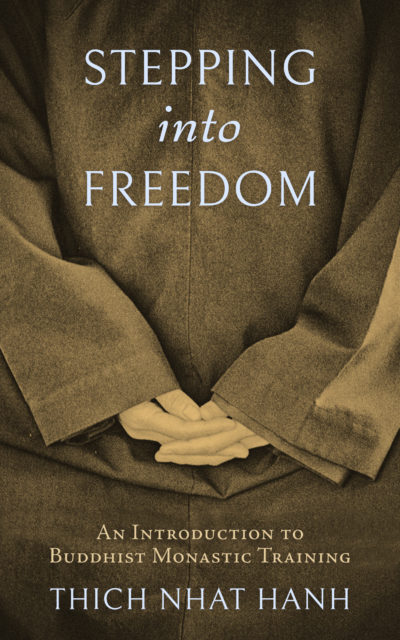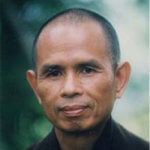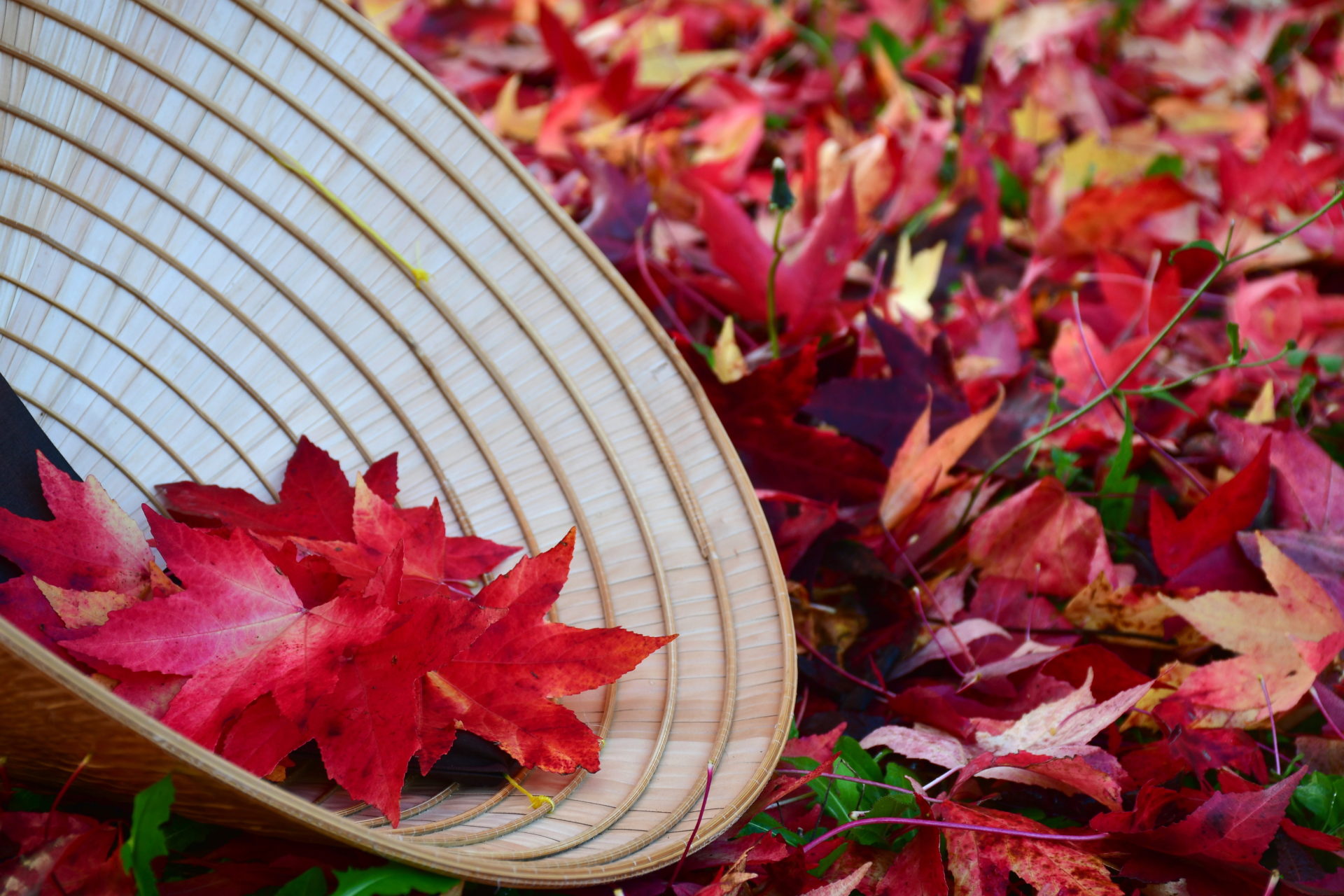Interview with Brother Chan Phap Luu
Brother Chan Phap Luu, one of the editors of Thich Nhat Hanh’s book Stepping into Freedom (Second Edition), shares about the changes reflected in the book.
The Mindfulness Bell: How has the training for novices changed since the first edition of Stepping into Freedom in 1997?
Brother Phap Luu: When Thich Nhat Hanh founded Prajna Monastery in 2005 in Vietnam,
Interview with Brother Chan Phap Luu
Brother Chan Phap Luu, one of the editors of Thich Nhat Hanh’s book Stepping into Freedom (Second Edition), shares about the changes reflected in the book.
The Mindfulness Bell: How has the training for novices changed since the first edition of Stepping into Freedom in 1997?
Brother Phap Luu: When Thich Nhat Hanh founded Prajna Monastery in 2005 in Vietnam, a number of senior Dharma teachers worked with Thay to update the content of Stepping into Freedom. This included adding many more practice gathas, and additional and more detailed fine manners. I think Thay wanted to support the elder brothers and sisters who needed to train literally hundreds of novices all at once. Making the monastic fine manners clearer and more detailed helped with this.
Also, there are many ways of practice in the Plum Village tradition—like making decisions by consensus, learning to speak out and share our idea even if we are young in the practice, as well as encouragement for young monastics to find a wholesome place to study and practice the Dharma—that are underemphasized in other traditions. Stepping into Freedom is one of the most concrete expressions of Thay’s lifelong vision to update Buddhism. The new fine manners and gathas clarify Thay’s legacy and hope for monastic culture in the twenty-first century.
MB: What differences do you anticipate in the second edition of Stepping into Freedom?
PL: Sister Chan Duc has worked with our small editorial team to render a more precise and fluid translation of The Admonitions and Encouraging Words of Master Guishan. Master Guishan’s words light a fire in the heart of anyone who reads them to engage wholeheartedly in the practice right now, not wasting our time in this precious life. The earlier edition’s English translation had been
somewhat watered down in the editorial process. We’ve restored the startling directness of Thay’s Vietnamese. Look next year for a new book on this text including Thay’s commentary.
In addition to the new gathas and fine manners added during the years of Prajna Monastery, we’ve added a glossary that should allow the book to stand alone as a complete guide to the monastic way of life. Already with the earlier edition, many young people had decided to put the contents of the book into practice in their daily life, even though they hadn’t taken the formal vows of a novice! This has included one young man in prison. Now, with the glossary, anyone who gets their hands on this book really has all the information they need to practice like the monastics of Plum Village do.
Of course, if you really want to practice as a monastic, you should find a Sangha as soon as possible. We are aware, though, that not everyone is in the position to come to one of our monasteries. Stepping into Freedom is the closest thing to a monastery in a book that I know of. The next would be Joyfully Together, a largely forgotten and vastly underrated book of Thay’s about how we make decisions and live together in community.
MB: How do you know when it's time to make a change to an ancient monastic code?
PL: Thay is a revolutionary for updating the full precepts of bhikshus and bhikshunis in 2003. Numerous recensions of the Vinaya, as well as the Chinese and Pali records of the Buddha’s last days, record the clear permission the Buddha gave to Ananda for the Sangha to “abolish the minor rules.” To keep the harmony of the monastic Sangha at the first sangiti, or universal gathering of fully awakened arhats, Mahakashyapa proposed to keep the precepts as they were and not add new ones. This was understandable at that time. It is also understandable now that we update the precepts to meet the needs of monastics living in the twenty first century, dealing with cars, planes, smartphones, and addictive Internet content like pornography.
In many ways, it is more difficult to be a monastic now. Though we have access to unprecedented resources—from 2600 years of Buddhism in India, Tibet, East and Southeast Asia—we also have unprecedented opportunities for distraction.
The important thing in updating the monastic code is to keep the spirit of renunciation, while finding skillful ways to deal with the material things of life now. Would the Buddha have imagined we would one day be leading online retreats? Perhaps he did. There are those sutras where the Buddha teaches simultaneously in one place as well as in a number of different heavens. Was he using Zoom? Or is this sutra imagining something like it? So if our novices use Zoom—and some of them know more about it than I do—then we need updated fine manners on using Zoom.
The editorial team has discussed incorporating new elements into what would be a future third edition of Stepping into Freedom. For now, we have left these discussions aside to bring the second edition up-to-date and in line with the Vietnamese text of Stepping into Freedom that was developed for Prajna in 2007. Now, with this second edition, the two texts parallel one another; that puts us in a better place to begin discussing things that may need updating in future versions.
The fine manners, precepts, and gathas are of an organic nature. The important thing is that we update them together as a community. This is a bit challenging, now that our elders are spread around the globe. So, stay tuned, the next update should be the result of an interesting process.

In this excerpt of Stepping into Freedom (Second Edition), Thich Nhat Hanh reflects on the practice with gathas.
When I entered Tu Hieu Monastery as a novice in 1942, I received a copy of gathas for daily use compiled by Chinese meditation Master Duti. Gathas are short verses to recite during daily activities to help us return to our practice of mindfulness. We practice gathas all day long with each activity.
In order to practice the gathas correctly in daily life, we need to memorize them. As you recite them to yourself, every line of the verse is accompanied by an in-breath or an out-breath: the first line by an in-breath, the second line by an out-breath. The aim of the practice is to maintain mindfulness so that we can dwell in the present moment. For example, when we brush our teeth, we need to practice during the whole time we brush our teeth:
Brushing my teeth and rinsing my mouth,
I purify the way I speak.
Through Right Speech my mouth becomes fragrant,
and a flower blooms in the garden of my heart.
We stand still in one place to practice this gatha, not walking back and forth, not talking or thinking about something else. In this way, we practice both fine manners and Right Mindfulness.
When we drive, road signs help us find our way. We go in the direction pointed by the first road sign until the next one shows us how to continue, and so on. Practicing with gathas is the same. When we practice, the gathas can be with us throughout the whole day, and we can live our day in awareness.
Washing Your Face
Cleaning my face is cleaning my mind,
removing every trace of dirt,
So that the source of peace and joy
permeates my whole body.
Shaving the Head
Shedding my hair completely,
I make the great vow today
to transform all my afflictions,
and bring happiness to all beings.
On the Stairs
Going up or down the stairs,
I let my steps be gentle.
If I hear them make a noise,
My mind is not at peace.
Placing Your Shoes
I place my shoes tidily.
May everyone always walk mindfully,
coming in and going out in freedom.
Entering the Meditation Hall
Entering the meditation hall,
I see my true self.
As I sit down,
I vow to cut off all disturbances.
Visualization before Touching the Earth
In the realm of suchness,
the one who bows and the one who is bowed to
are equally empty of a separate self.
Harmonizing the Breath
Breathing in, I calm my body.
Breathing out, I smile.
Dwelling in the present moment,
I know this is a wonderful moment!
Riding the Bicycle
Sitting upright on the bicycle,
I keep my balance stable.
Practicing merit along with insight,
action and wisdom go together.
Taking Care of Anger 1
Anger makes me ugly.
Knowing this, I smile.
Coming back to myself, I guard my mind,
diligent in loving kindness.
Taking Care of Anger 2
Angry in the historical dimension,
I breathe as I touch the ultimate and smile.
This is a game where love and hate take turns;
the river is always full of water.
Taking Care of Anger 3
Angry with each other in the historical dimension,
I close my eyes and look deeply.
Three hundred years from now,
where shall you and I be?
Taking Care of Sexual Energy
I vow to turn this energy
into the power of right diligence
to go forward on the path of my ideal
and quickly realize my monastic calling.
Stepping into Freedom (Second Edition) is available at parallax.org and wherever books are sold.



